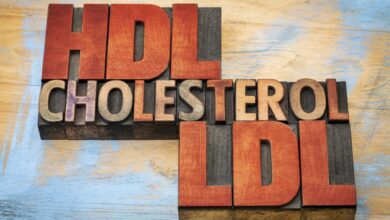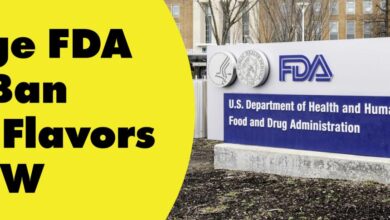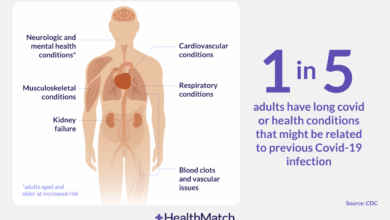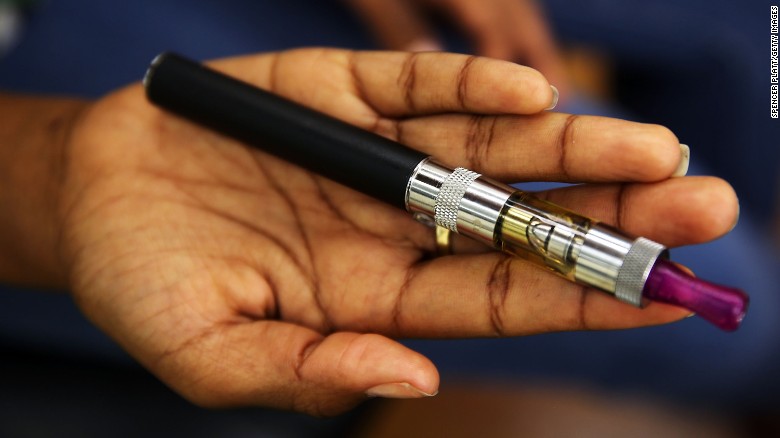
Do e cigarettes contain prescription drugs – Do e-cigarettes contain prescription drugs? This question sparks a crucial conversation about the safety and regulation of vaping products. E-cigarettes, while a popular alternative to traditional cigarettes, raise concerns about potential contamination with prescription medications. We’ll delve into the composition of e-liquids, the risks of adding prescription drugs, and the regulatory landscape surrounding these products. Understanding the potential dangers is paramount for responsible vaping practices.
E-cigarettes come in a wide array of flavors and brands, and their composition can vary significantly. This often leads to questions about potential hidden ingredients and the possibility of prescription drugs being added intentionally or accidentally. The chemical makeup of e-liquids, including the solvents, flavorings, and nicotine, needs careful consideration. This examination will highlight potential similarities between ingredients and prescription drugs, fostering a better understanding of the risks involved.
E-cigarette Composition
E-cigarettes, often marketed as a less harmful alternative to traditional cigarettes, function through vaporizing a liquid solution. Understanding the components of this liquid is crucial to comprehending potential risks and benefits. This exploration delves into the typical constituents of e-cigarette liquids, their chemical makeup, and how variations between brands impact the overall composition.
E-liquid Components
E-cigarette liquids, or e-liquids, are typically composed of propylene glycol (PG), vegetable glycerin (VG), flavorings, and nicotine. The proportions of PG and VG can vary significantly between brands and product types, influencing the vapor production and throat hit. Understanding these components is vital to evaluating the potential health impacts.
| Component Name | Chemical Formula (Approximate) | Function in E-cigarette |
|---|---|---|
| Propylene Glycol (PG) | C3H8O2 | Acts as a solvent, creating the vapor. It contributes to the “throat hit” sensation often associated with vaping. |
| Vegetable Glycerin (VG) | C3H8O3 | Also a solvent, but produces a thicker, cloudier vapor compared to PG. It often results in a smoother throat hit. |
| Nicotine | C10H14N2 | An addictive stimulant, derived from tobacco plants. Its presence varies significantly between products. |
| Flavorings | Variable | A vast array of flavorings are added to enhance the taste and appeal of the e-liquid. These can include artificial and natural flavors, and their safety is often a point of contention. |
Chemical Makeup of E-liquids
The chemical makeup of e-liquids can be complex. Beyond the primary components like PG and VG, manufacturers frequently add flavorings and nicotine. The specific chemical compounds within these flavorings are often proprietary information, making independent analysis challenging. Some flavorings have been linked to potential health concerns. Furthermore, the presence of contaminants or byproducts from the manufacturing process cannot be entirely ruled out.
For example, some studies have found trace amounts of potentially harmful chemicals in certain e-liquids, raising further questions about long-term health effects.
Brand Variations
Different brands of e-cigarettes often utilize varying proportions of PG and VG, impacting the vapor production and the perceived “throat hit.” Some brands may also incorporate different flavorings or nicotine concentrations. This variability highlights the need for comprehensive research into the long-term effects of specific e-liquid compositions. For instance, a brand known for its high VG content may produce a noticeably different vaping experience compared to a brand with a higher PG content.
Potential for Confusion with Prescription Drugs, Do e cigarettes contain prescription drugs
While e-liquids contain chemicals, it is highly unlikely that they contain prescription drugs in a significant amount. The chemical structures of common e-liquid ingredients differ considerably from those found in prescription medications. Nevertheless, the presence of certain flavorings could potentially be confused with certain components of some medications, but a direct correlation is not evident. Furthermore, the lack of rigorous regulation in the e-cigarette industry can lead to inconsistencies in product composition, which can potentially cause confusion.
Prescription Drug Presence in E-Cigarettes
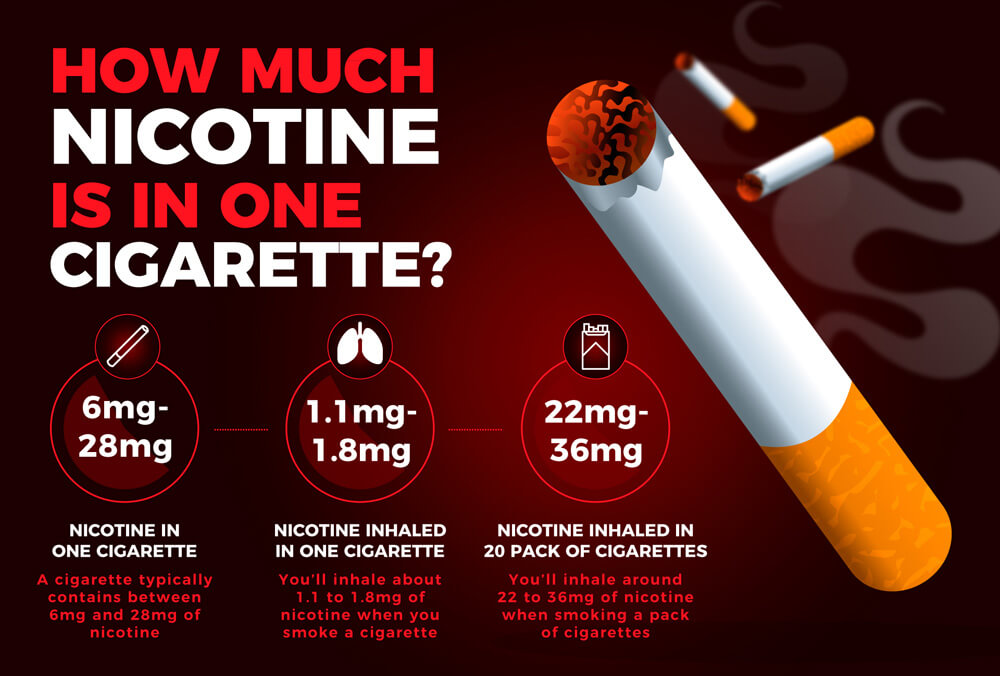
E-cigarettes, while offering an alternative to traditional cigarettes, have raised concerns regarding potential health risks. One significant worry is the possibility of unauthorized prescription drugs being added to e-cigarette liquids. This practice, whether accidental or intentional, presents serious dangers to users and the wider public. The unregulated nature of some e-cigarette markets further compounds these concerns.The potential for contamination of e-cigarette liquids with prescription drugs necessitates a careful examination of the risks and regulatory frameworks in place.
Users may inadvertently consume medications in doses far exceeding the prescribed amounts, leading to serious health consequences. This is particularly concerning for individuals with pre-existing medical conditions or those taking other medications.
Potential for Accidental or Intentional Addition
E-cigarette liquids are often manufactured and sold in a way that lacks the stringent quality control and safety measures associated with prescription medications. This creates an opportunity for accidental contamination, either through the use of contaminated ingredients or improper manufacturing processes. Intentional adulteration is another serious concern, with illicit manufacturers potentially adding prescription drugs to maximize profit or to create a more potent or appealing product.
Risks Associated with Presence of Prescription Drugs
The presence of prescription drugs in e-cigarette liquids poses significant risks, primarily due to the potential for self-medication and inaccurate dosage. Individuals may consume these drugs without a doctor’s supervision, potentially leading to adverse reactions or exacerbating existing health conditions. Furthermore, the unpredictable nature of e-cigarette liquid compositions means that users may not know the exact dosage of any prescription drug present, making it difficult to monitor and manage their health.
Illicit Manufacturing and Distribution
The illicit manufacturing and distribution of e-cigarettes containing prescription drugs are serious concerns for public health. The lack of regulatory oversight in some markets allows for the creation and sale of these products without proper safety testing or quality control. This can lead to the widespread distribution of unsafe products, potentially exposing a large number of individuals to potentially harmful substances.
Examples include counterfeit medications, where the drug’s potency and purity cannot be guaranteed, leading to dangerous side effects or ineffective treatment.
Regulations Surrounding E-Cigarette Production and Sale
The regulations governing the production and sale of e-cigarettes differ significantly from those governing prescription medications. E-cigarettes are typically subject to less stringent regulations regarding ingredients, testing, and labeling compared to prescription drugs. This difference in regulatory frameworks allows for a greater degree of variability in e-cigarette compositions, increasing the risk of accidental or intentional contamination.
Comparison of Legal Frameworks
| Characteristic | E-Cigarette Ingredients | Prescription Drugs |
|---|---|---|
| Regulation Oversight | Generally less stringent; varying by jurisdiction | Highly regulated by governmental agencies, including extensive testing and approval processes. |
| Ingredient Disclosure | Often limited; may not be required to list all components | Comprehensive ingredient lists are mandatory, including dosages and potential side effects. |
| Testing and Approval | May not undergo rigorous testing and approval processes | Extensive testing and approval processes by regulatory bodies are required before a drug can be marketed. |
| Manufacturing Standards | Vary widely by manufacturer, and may not be subject to strict quality control standards. | Strict manufacturing standards are enforced to ensure drug purity and potency. |
Misidentification and Confusion
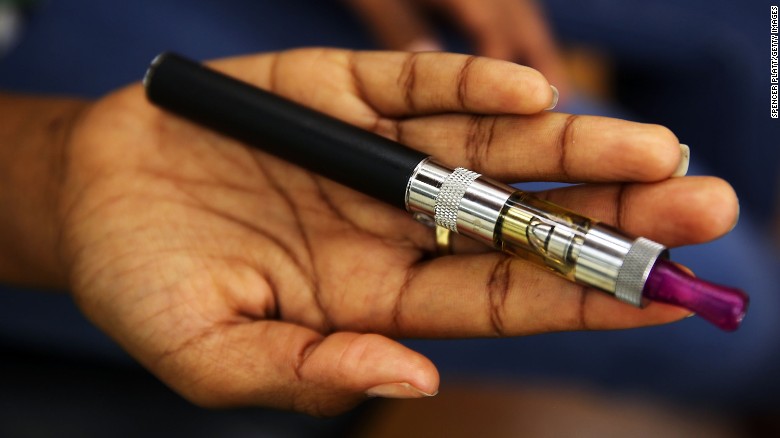
E-cigarette liquids, often marketed with enticing flavors, can be easily mistaken for other substances, including prescription medications. This misidentification poses a significant health risk, as consuming unintended medications can have severe consequences. Understanding the potential for confusion and the resulting dangers is crucial for responsible e-cigarette use.Misidentification of e-cigarette liquid components as prescription drugs can lead to serious health complications.
Consumers may accidentally ingest medication intended for a specific condition, leading to adverse reactions or exacerbating existing health problems. The potential for harm is especially high when the appearance or labeling of the e-liquid resembles a prescription drug.
Potential Reasons for Misidentification
E-cigarette liquids, especially those with strong colors and flavors, can resemble certain prescription drugs in appearance. Similarly, some e-liquid names or descriptions might be similar to the names of prescription medications. This can lead to accidental ingestion of the wrong substance.
Health Consequences of Mistaken Consumption
The health consequences of mistakenly consuming e-cigarette liquid containing ingredients similar to prescription drugs can be unpredictable and potentially severe. Unintended ingestion of medication could trigger adverse drug reactions, especially if the person is already taking other medications or has pre-existing medical conditions. The effects could range from mild discomfort to life-threatening complications.
Common Misconceptions about E-cigarette Liquids
Some consumers may hold misconceptions about the safety or composition of e-cigarette liquids. They may assume that certain flavors or colors indicate specific pharmacological effects, leading to misidentification. The lack of comprehensive labeling requirements for e-cigarette liquids further exacerbates this problem. This is particularly true for those unfamiliar with the ingredients and potential risks.
Examples of Ingredients Resembling Prescription Drugs
Certain ingredients used in e-cigarette liquids can resemble certain prescription drugs in appearance or name. For instance, some liquids containing propylene glycol or vegetable glycerin may resemble clear, colorless solutions similar to certain intravenous medications or oral solutions. The color of the liquid might also mimic the color of certain prescription drugs. Additionally, some flavorings or additives might share similar names to certain medications.
Flowchart of Misidentification and Potential Consequences
| Step | Action | Potential Consequence |
|---|---|---|
| 1 | Consumer mistakenly believes e-cigarette liquid is a prescription drug. | Possible misdiagnosis or self-medication. |
| 2 | Consumer consumes e-cigarette liquid. | Adverse drug reaction, including allergic reactions, or exacerbation of existing health conditions. |
| 3 | Consumer experiences symptoms. | Seeking medical attention, potential hospitalisation or long-term health effects. |
| 4 | Medical professional identifies misidentification. | Treatment based on actual ingredients, monitoring for potential long-term effects. |
Safety and Regulation: Do E Cigarettes Contain Prescription Drugs
E-cigarettes, while offering an alternative to traditional cigarettes, raise significant safety concerns. Proper handling and disposal, along with robust regulatory oversight, are crucial to mitigating potential risks. The presence of prescription drugs in e-liquids, accidental ingestion, or even deliberate adulteration can have severe consequences. Understanding the methods of detection and the existing safety standards is vital for both consumers and regulators.The unregulated nature of the e-cigarette market poses a considerable threat to public health.
Quick question: do e-cigarettes contain prescription drugs? The answer is generally no, but it’s a tricky topic. Thankfully, the CDC has some great advice on returning to work safely, which is something we all need to consider right now cdc gives advice on how to go back to work what the experts say. While the CDC’s recommendations don’t directly address e-cigarettes, understanding workplace safety protocols is crucial, especially if you’re worried about your health.
So, while e-cigarettes aren’t usually laced with prescriptions, it’s still a good idea to be informed and cautious.
This makes a robust system for detection and regulation of e-liquids imperative to ensure the safety of consumers. The potential for adulteration and the presence of potentially harmful substances underscore the need for comprehensive safety measures and stringent quality control standards.
So, do e-cigarettes contain prescription drugs? It’s a bit of a tricky question, and honestly, it depends. While they might contain some potentially harmful chemicals, there’s no evidence they are routinely laced with prescriptions. To understand the potential health impact of different substances, check out this fun quiz that compares sugar content in various foods and drinks: quiz what has more sugar.
Ultimately, the presence of prescription drugs in e-cigarettes is a rare and, thankfully, uncommon occurrence.
Safe Handling and Disposal of E-Cigarettes
Safe handling and disposal practices are essential to minimize potential risks associated with e-cigarettes. Proper disposal methods prevent accidental ingestion, especially by children or pets. This includes ensuring the device and its components are stored securely out of reach. Proper disposal methods include recycling programs for devices, or safe disposal of liquid cartridges, as recommended by local authorities.
Methods for Detecting Prescription Drugs in E-Cigarette Liquids
Several methods are employed to detect the presence of prescription drugs in e-cigarette liquids. These methods include liquid chromatography-mass spectrometry (LC-MS), which can identify and quantify various chemical compounds, including pharmaceuticals. Gas chromatography-mass spectrometry (GC-MS) is another technique that is effective for detecting and identifying volatile organic compounds (VOCs) that might be present in e-liquids. These techniques are crucial in determining the presence of unapproved substances, allowing for better understanding and prevention of potential harm.
Comparison of Safety Standards for E-Cigarette Liquids and Prescription Medications
The safety standards for e-cigarette liquids differ significantly from those for prescription medications. Prescription drugs undergo rigorous testing and approval processes to ensure their safety and efficacy. E-cigarette liquids, on the other hand, often lack such stringent controls, leading to potential inconsistencies in quality and safety. This difference in standards highlights the critical need for improved regulation and testing for e-cigarette liquids.
This gap in regulatory oversight allows for the introduction of potentially harmful substances that might not be present in prescription medications.
Quick question: do e-cigarettes contain prescription drugs? The short answer is usually no, but it’s a bit more complicated than that. While e-cigarettes themselves aren’t typically formulated with prescription medications, some vaping liquids might contain similar compounds or even be marketed to mimic the effects of certain prescription drugs. For example, you might find some vaping liquids that try to mimic the flavor profile of black raspberry, and some people might even wonder if they contain the same compounds as black raspberries, which can be interesting to explore! black raspberry vs raspberry is a fascinating read.
Ultimately, it’s always best to consult a medical professional if you have concerns about vaping and prescription medications. In short, the answer is usually no, but the nuance is important to consider.
Potential for Adulterated E-Cigarette Liquids and Public Health Impacts
The potential for adulterated e-cigarette liquids is a serious concern for public health. Adulteration can involve the addition of harmful chemicals, including heavy metals or even undeclared prescription drugs, posing significant health risks to users. These risks are exacerbated by the lack of uniform testing and regulatory oversight. The unauthorized introduction of unapproved compounds into e-liquids may result in unpredictable health effects.
Resources for Consumers to Learn More About E-Cigarette Safety and Regulation
Consumers can access valuable information about e-cigarette safety and regulation from various sources. These include government agencies like the Food and Drug Administration (FDA), health organizations such as the Centers for Disease Control and Prevention (CDC), and reputable scientific publications. By consulting these resources, consumers can make informed decisions regarding e-cigarette use and stay updated on the latest safety recommendations.
- FDA Website: Provides comprehensive information on e-cigarette regulations and safety guidelines.
- CDC Website: Offers data and insights on the health effects of e-cigarette use, including information on potential risks associated with adulterated e-liquids.
- Local Health Departments: Offer local information and resources specific to their community.
- Consumer Reports: Provides independent testing and analysis of e-cigarette products and their safety.
Illustrative Examples
E-cigarette liquids, often marketed with enticing flavors, can sometimes mask potentially harmful ingredients. Understanding the composition and potential for misidentification is crucial for informed decision-making. This section provides hypothetical scenarios, real-world examples, and visual aids to illustrate the complexities surrounding e-cigarette liquid safety.
Hypothetical Scenario
Imagine a young adult, intrigued by a new e-cigarette flavor advertised as containing a “powerful energy boost.” Unbeknownst to them, the liquid contains a stimulant similar in chemical structure to a prescription ADHD medication. They experience side effects like anxiety and insomnia, misinterpreting them as a consequence of the “energy boost” rather than a reaction to the unauthorized substance.
This illustrates how misleading marketing and lack of ingredient transparency can lead to adverse health consequences.
Real-World Case Study
While a specific case study on e-cigarette liquids containing unauthorized prescription-level drugs is difficult to find due to the challenges in tracking such incidents, there have been reported instances of e-cigarette liquids containing unauthorized or excessive levels of nicotine, cannabinoids, or other substances. These incidents underscore the importance of strict regulations and thorough testing of e-cigarette liquids to prevent harm.
Further research and stricter regulations are needed to prevent similar situations.
Visual Representation of E-cigarette Liquid Composition
Imagine a diagram depicting a clear, liquid-filled e-cigarette tank. Small, colored spheres representing various chemical compounds – propylene glycol, vegetable glycerin, flavorings, and nicotine – would be dispersed throughout the liquid. A separate section of the diagram could highlight the presence of potentially harmful impurities or adulterants, which might be visually depicted as smaller, darker, and less numerous particles mixed within the liquid.
This visual aids in understanding the complex mixture of substances within e-cigarette liquids.
Chemical Compound Comparison
| Chemical Compound (E-cigarette Liquid) | Chemical Compound (Similar Prescription Drug) | Potential Health Effects |
|---|---|---|
| Propylene Glycol | Various pharmaceuticals, including some cough syrups | Generally considered safe in appropriate amounts, but excessive exposure can cause respiratory irritation. |
| Vegetable Glycerin | Some topical medications | Generally considered safe in appropriate amounts. |
| Nicotine | N/A (though similar in chemical structure to some alkaloids) | Highly addictive and potentially harmful to the cardiovascular and nervous systems. |
| Flavorings | Various flavorings in pharmaceuticals, but often with different concentrations | Some artificial flavorings may contain potentially harmful chemicals. |
This table illustrates that some chemical compounds found in e-cigarette liquids may have similarities to compounds used in prescription drugs, but concentrations and other factors may differ significantly. This comparison highlights the need for precise and detailed labeling to avoid misinterpretations.
Legal and Safety Regulations Comparison
This is a placeholder for an infographic.
The infographic, if visualized, would visually compare the legal requirements and safety standards for e-cigarette liquids with those of prescription medications. It could use different colored sections to highlight the differing levels of testing, labeling requirements, and regulatory oversight. A visual representation would show a stark contrast in the level of scrutiny and control over prescription medications compared to e-cigarette liquids.
Summary
In conclusion, the potential for prescription drugs in e-cigarettes demands attention. While e-cigarettes aren’t typically formulated with prescription medications, the possibility of contamination warrants vigilance. Understanding the ingredients, potential risks, and regulatory frameworks is crucial for consumers and policymakers alike. Responsible vaping practices, coupled with robust regulations, are essential to ensure public health and safety. The discussion surrounding e-cigarettes and prescription drugs is far from over, and continued vigilance is necessary.

